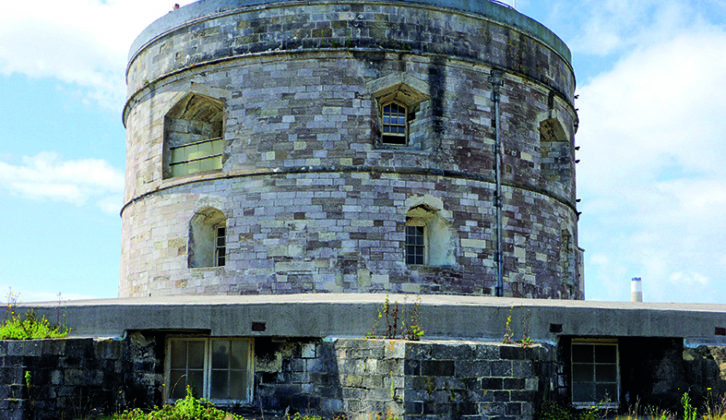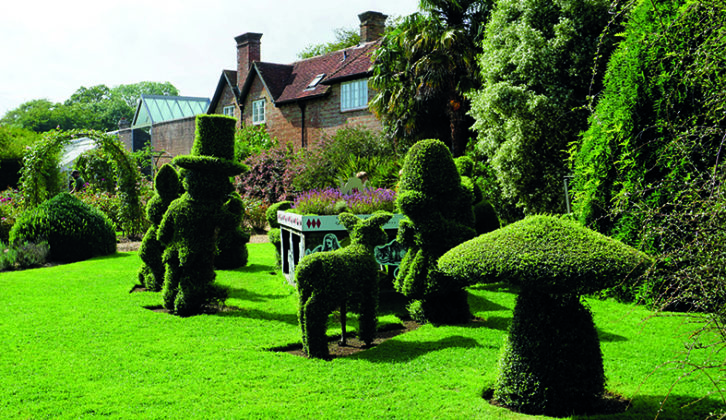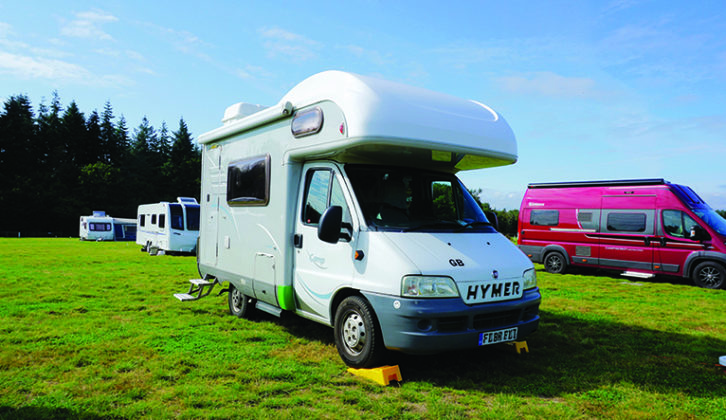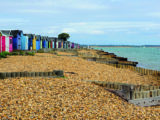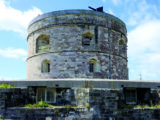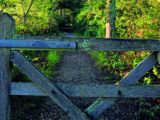Pop-up campsite? I’ve seen pop-up tents, which put themselves up in moments. But pop-up sites?
We have stayed on all manner of campsites, and explored a fair few wild camping spots, over our many years of touring, but never a pop-up. So what are they all about?
There was only one way to find out – as soon as the email advertising such a site at Beaulieu arrived in my inbox, I was on the phone and booking us in for a weekend.
A whisper in my husband Ro’s ear that we would best staying on the actual site of the National Motor Museum and World of Top Gear had him firmly on side.
The pop-up proved to be exactly that, and so much more. A couple of large fields on the Beaulieu estate, in the south-east of the beautiful New Forest National Park. had been turned over to the Caravan and Motorhome Club to run as a campsite for the summer.
Luxury temporary toilet and shower blocks, and some coloured flags on the ground, along with a couple of generators for electricity, were all it took to turn an empty field into a campsite.
Castle on the beach

I have to say it felt a little strange to drive onto the grand Beaulieu estate in our ‘van, ignoring the signs to the museum and turning down a short track to the campsite field. However, the Club staff who welcomed us couldn’t have been more friendly, pointing out the facilities and water points, and guiding us to our pitch.
After setting up at Beaulieu, we decided to put our English Heritage membership to good use straight away and visit nearby Calshot Castle, on the beach overlooking Southanpton Water and the Isle of Wight.
Calshot was one of several artillery castles built in the area by Henry VIII during the 1500s, to defend the south coast from invasion by the French and Spanish, and its position has largely ensured its survival to the present day.
It is approached along a narrow road lined with colourful beach huts, on the other side of which is a spit of pebbly beach that Ro pronounced a perfect fishing spot – although if you do fancy fishing here, check that you’re not in the area owned by Calshot Activities Centre. As well as outdoor pursuits, including fishing and kayaking, the centre has the oldest indoor velodrome in Britain, a dry ski slope and a climbing wall.
Public parking is available at reasonable charges if, like us, you just fancy an hour or two exploring the castle and the wonderful beach.

The castle was built using stone from Beaulieu Abbey, just up the road and next door to our site, when it was dismantled during the Reformation. Mind you, far from the temporary pop-up which was to be our home for the next three nights, this castle was built to last.
In fact, it was still in use in the 1950s, albeit in a rather different role as a coastguard station. Many changes have been made to the building over the years, including lowering the outer walls in the 17th century to afford greater protection from ships sailing up the Solent that were much taller and carried more advanced weaponry than those of the 16th century.
By the middle of the 18th century, the Royal Navy was providing protection to English waters and Calshot Castle became a coastguard station, dealing with the rising smuggling trade.
Its role changed yet again in the 20th century, with rapid developments in aviation and the introduction of seaplanes. Calshot now turned to supporting these aircraft, and to anti-submarine patrols during World War I.
Today, with the dedicated coastguard tower next door taking over such duties, the small castle rests peacefully in the hands of English Heritage. While mum and dad are learning all this history from the information boards dotted around the caste and enjoying the views over the Solent from the keep, children (even large ones like me) are encouraged to search for ‘rats’, images of which are tucked away in various rooms.
Grand country estate

But we had lingered long enough and were eager for more pop-up camping, so we returned to the site. We made short work of a sandwich lunch in the sunshine, then decided to make the most of the weather and wander into Beaulieu village.
The walk took us along a wooded footpath (this is part of the ancient New Forest, which has been around since William the Conqueror created it as a hunting ground in about 1079) before emerging onto the main road beside the Mill Pond wildlife sanctuary.
The sound of popping bubblegum turned out to be fish surfacing to catch their lunch, while roods and grasses rustled in the breeze. Swans watched over their offspring – but never mind coming over all poetic, we had a village to explore!
Besides the famous museum, abbey and palace, the village has a couple of shops, a vintage car garage (our pockets would only allow us to stand, stare and dream from outside, along with the local ponies), and a restaurant/bar, where we couldn’t resist a pint of the local Beaulieu IPA. While there, we booked a table for dinner the following evening, as it was the only eatery in town and seemed very popular.
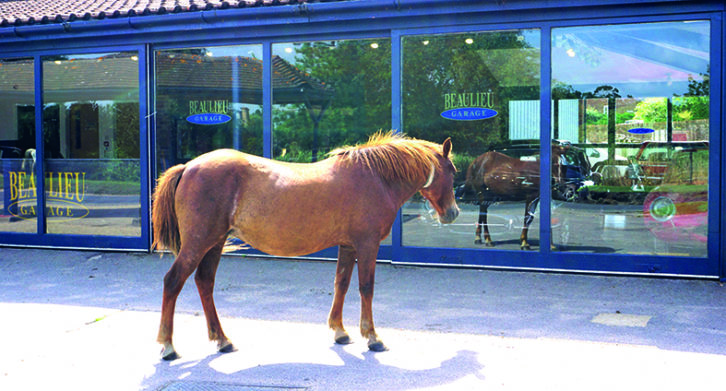
And speaking of dinner, it wasn’t long before we were back at the ‘van, cooking up our own version of a gourmet meal before settling down to a good night’s sleep.
This site felt different from any others we have stayed on, and not just because of (or perhaps precisely because of) the temporary nature of the facilities and the fact that we were essentially all in a very big field. There was a palpable sense of community here, yet at the same time of space, of peace and quiet and relaxation.
The following day, we took full advantage of the discounted tickets to the museum we were able to buy courtesy of our campsite booking.
Collecting cars

The National Motor Museum began life in 1952, when Edward Douglas-Scott-Montagu displayed a small collection of five cars in the hallway of his ancestral home (a pop-up museum?) partly in tribute to his father, said to have introduced Edward VII to motoring in the 19th century.
The popularity of the collection grew and it wasn’t long before a purpose-built museum was being established in the grounds of the estate to house the increasing number of exhibits. In 1972, it became the National Motor Museum.
Today, your entrance ticket provides access to World of Top Gear, the Secret Army exhibition, the Abbey, the Victorian and kitchen gardens, and part of the grand Palace House itself.
There is also a monorail to take visitors on an aerial ride around the estate, going through the interior of the museum on its way and offering a unique bird’s eye view of some of the exhibits.
If you prefer, a veteran bus can take you around the grounds. There’s also a café for refreshments when you need to take a break and refuel.

Once we had our fill of cars and bikes, and a ride on the monorail, we visited the Cistercian Abbey ruins and the Palace House. The church began life in 1204 as a refectory for the abbey monks. After the dissolution of the monastery by Henry VIII around 1538, the refectory was given to the villagers as a place of worship.
Owing to its unusual beginnings, the church does not face the traditional east to west, but instead, lies north to south. The pulpit, accessed via a stone stairway cut into the wall (apparently one of only two in England), was originally the lectern from which the abbot would read to the monks as they ate in silence.
Falcons in the sunshine

After all of that history, we couldn’t resist the temptation of an ice cream while we wandered in the gardens, where a topiary Mad Hatter’s Tea Party had popped up.
Finally, we settled on the grass outside the Palace House to watch the estate falconer training his birds in the sunshine, explaining what was happening as he did so. A large peregrine swooping past my shoulder, almost eyeball to eyeball, was the pinnacle of a day well spent.

Back on site, we swapped touring tales with our neighbours before strolling on the footpath to the village for dinner at the Montagu Arms. Not the cheapest of meals, but very enjoyable – and no washing up to do afterwards!
Next day, looking to go a bit further afield, we opted to walk the two-mile trail to Buckler’s Hard. It turned out to be an easy, well-marked footpath through the trees and fields, ending at the dockyard.
Information boards dotted along the route explain the origins of this ancient woodland, which has been thriving here since about 1600, although there have been trees on this site since as far back as 10,000 years ago. There’s definitely nothing pop-up about these woods.
Buckler’s Hard is a small, very pretty hamlet, where you can visit the maritime museum, as well as a shipwright’s cottage furnished as it would have been in the late 18th century, giving a real sense of the lifestyle of the people who spent their days boat building to provide for Nelson’s fleet at Trafalgar.

River cruises operate from the marina and there is a café for that all-important refreshment stop. Usually, you could instead choose to relax with a pint in the Master Builder’s Hotel, but it was closed for a pop-up of a different sort when we visited – a wedding marquee in the gardens.
Back at our own pop-up field, lo and behold, a pop-up curry stall had appeared! Guess what we had for dinner?
Then suddenly it was Sunday and time for us to start for home. As usual, we wanted to delay our return for as long as possible, so we headed into Burley for a couple hours. Window shopping, we spotted a sign advertising local cider, so we followed the directions up the road, and sure enough, there was a cider maker, with his own orchard just over the road.
So now that we know what pop-up campsites are all about, would we choose to stay on one again? Just point us in the right direction and we’ll be there in a heartbeat!
TOUR ESSENTIALS
When to go
The Beaulieu pop-up site is open 24 June to 20 July and 11 August to 1 September 2022 but there are lots of other sites in the area. The New Forest National Park is glorious at any time and perfect for walkers in all seasons. The National Motor Museum is open all year.
Food and drink
Beaulieu village is small and the only place to eat is the Montagu Arms, where pre-booking is advisable during the high season.
Find out more
- Calshot Castle
- Calshot Activities Centre
- National Motor Museum
- Buckler’s Hard
- New Forest National Park
Where we stayed
Caravan and Motorhome Club Beaulieu Estate pop-up

- Beaulieu Estate, Brockenhurst, SO 42 7ZN
- Web www.caravanclub.co.uk
- Open to members and non-members, but only during specific weeks, so check website for dates
- Charges £36-£38
If you liked this… READ THESE:
South East England: Practical Motorhome Travel Guide
10 top sites for history lovers
If you’ve enjoyed reading this article, why not get the latest news, reviews and features delivered direct to your door or inbox every month. Take advantage of our brilliant Practical Motorhome magazine SUBSCRIBERS’ OFFER and SIGN UP TO OUR NEWSLETTER for regular weekly updates on all things motorhome related.
Your entrance ticket provides access to World of Top Gear, the Secret Army exhibition, the Abbey, the Victorian and kitchen gardens, and part of the grand Palace House itself


